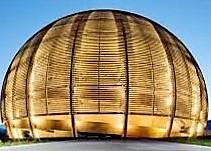Speaker
Description
The nucleosynthesis of elements heavier than iron in stars is one of the most relevant topics in nuclear astrophysics. The neutron-capture processes made most of the abundances of heavy elements in the solar system, but they are not able to make a number of rare proton-rich stable isotopes (p-nuclei) lying on the left side of the stability valley. The $\gamma$-process, i.e. a chain of photodisintegrations on heavy nuclei, is the most established process for the synthesis of p-nuclei in core-collapse supernovae. In this talk, I will present the main features of the $\gamma$-process nucleosynthesis in massive stars, considering a range of different progenitor stars and supernova explosions. I will discuss present uncertainties affecting the $\gamma$-process, and the discrepancies between theory and observations affecting the production of the stable p-nuclei and of the radioactive isotopes $\rm^{92}Nb$ and $\rm^{146}Sm$, which signature has been measured in Early Solar System material.
